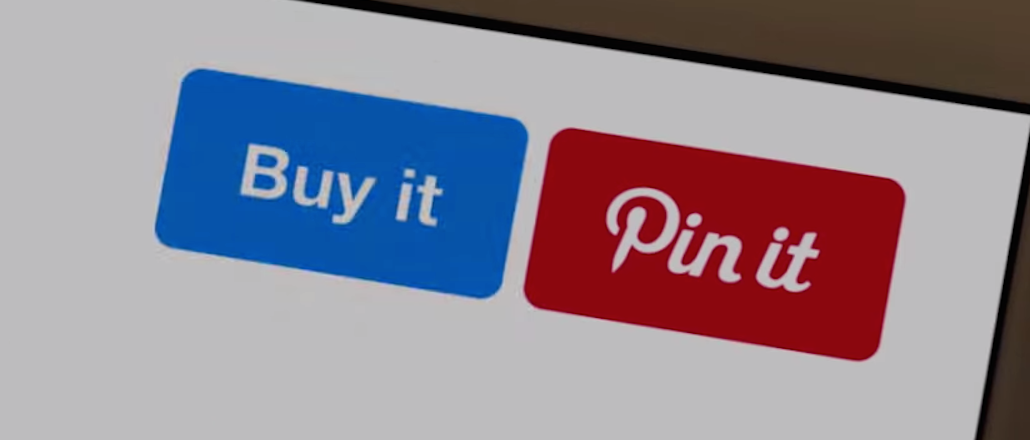
Facebook isn’t going to let Pinterest take all the click-to-buy glory. The social media giant announced last week that it would be expanding its shoppable sponsored ads, encouraging customers to shop within the same platform that provides them updates on friends and family.
Right now, Facebook will only offer click-to-buy ads through a partnership with Shopify, the e-commerce marketplace for small and medium-sized retailers. Shopify is also working with Pinterest to power buyable pins for local, independent merchants on the platform, alongside big brands like Macy’s, Nordstrom and Neiman Marcus.
Facebook has been testing shoppable sponsored ads for almost a year now on a small scale, but its recent decision to roll it out to more retailers couldn’t come at a more competitive time for click-to-buy technology. Here’s how Facebook and Pinterest’s shoppable solutions compare.
Reach
Facebook has 1.44 billion active monthly users compared to Pinterest’s estimated 70 million. (Pinterest’s numbers aren’t public.) According to Shopify data, Pinterest is second to, but well behind Facebook when it comes to driving traffic to the marketplace. Facebook has Pinterest trumped in sheer size.
And while Pinterest has the ability to drive consumers from the inspiration process to the checkout page, its appeal might be too targeted for many retailers.
“Where Pinterest primarily falls short is in male-oriented categories and less curated decisions, such as consumer electronics,” said Jonathan Opdyke, CEO of search advertising provider HookLogic. “If no one is pinning it, then e-commerce advertisers won’t see benefits.”
Facebook, meanwhile, offers up a massive audience. And as Vince Meyer, vp of business development at adMarketplace pointed out, when Facebook makes a change, its users adjust.
Ad position: web_incontent_pos1
“If it wants to become a transactional platform, and it goes forward with that, people are going to adapt,” he said.
Winner: Facebook. It’s a powerful platform, even if retail isn’t its forté.
Consumer intent
Buy buttons — whether they’re on Facebook, Pinterest, Google, YouTube or Instagram — rely on a consumer’s intent to purchase in order to be functional. Platforms could be overestimating their ability to convince someone to buy on their site, when the user didn’t visit with that plan in mind. If the user only wants a social experience, it can be interruptive, according to Meyer.
Between Facebook and Pinterest, Pinterest has the edge on consumer intent.
“As a user on Pinterest, not being able to easily buy something you saw was an issue,” said Meyer. “People aren’t going to Facebook to buy.”
Ad position: web_incontent_pos2
Facebook’s had a hard time tapping into e-commerce potential in the past. It launched and then closed its Facebook Gifts program, and its retargeted ads don’t get much click-through action, according to Meyer.
Pinterest, meanwhile, has been fielding requests for an easier way to shop its boards for years. Sarah Hoople Shere, product marketing and commerce lead at Pinterest said that “buying on Pinterest is the number one requested feature since we started the company.” According to research from Millward Brown, 93 percent of active Pinterest users said they use the platform to plan for purchases; 87 percent said they’ve purchased something because of Pinterest.
For brands, they’re seeing Pinterest as a new commerce channel.
“One exciting aspect about the buyable pins is that it will get brands in front of new customers,” said Mary Beech, svp and CMO at Kate Spade, one of the first retailers to test the pins. “When the new technology launches later this month, existing product pins will become buyable, opening up more opportunities for discovery and purchase.”
Winner: Pinterest. When you need inspiration to redecorate a room or choose an outfit for a special occasion, you head there. Facebook isn’t linked to e-commerce in the same way, making it less clear whether or not its users will readily shop.
Attribution
For retailers, attribution has gotten much more difficult to trace, now that shoppers are gaining inspiration, conducting research and making purchases across social media, mobile, online and in-store.
Buy buttons present a solution to that tangled web of attribution by pulling the checkout process closer to the inspiration users get on social media platforms. This way, attribution is much more traceable: A customer went to Pinterest to browse black boots, saw a buyable pin from Nordstrom and bought them on the spot.
Facebook, on the other hand, isn’t a common platform for e-commerce inspiration, so it’s going to be harder for it to prove that it’s causing conversions, according to Meyer.
“Facebook’s ability to claim they were the main reason for the conversion is going to be difficult, because they’re not generally part of the inspiration process,” he said.
Winner: Pinterest. The platform is known for its ability to inspire, and for retailers, “inspire” is code for “convince to buy.”
More in Media

NewFronts Briefing: Samsung, Condé Nast, Roku focus presentations on new ad formats and category-specific inventory
Day two of IAB’s NewFronts featured presentations from Samsung, Condé Nast and Roku, highlighting new partnerships, ad formats and inventory, as well as new AI capabilities.

The Athletic to raise ad prices as it paces to hit 3 million newsletter subscribers
The New York Times’ sports site The Athletic is about to hit 3 million total newsletter subscribers. It plans to raise ad prices as as a result of this nearly 20% year over year increase.

NewFronts Briefing: Google, Vizio and news publishers pitch marketers with new ad offerings and range of content categories
Day one of the 2024 IAB NewFronts featured presentations from Google and Vizio, as well as a spotlight on news publishers.
Ad position: web_bfu